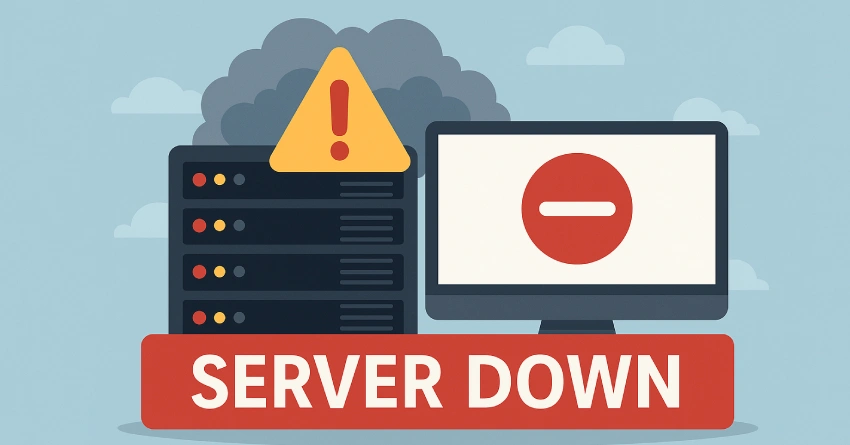Server downtime can pose a significant challenge for businesses, creating disruptions that can lead to lost revenue, decreased productivity, and severe damage to brand reputation. The reliability of servers is critical, as they form the backbone of IT infrastructure, hosting essential applications, storing vital data, and facilitating everyday business operations. Thus, understanding and addressing the various factors that commonly contribute to downtime is crucial for organizations striving to maintain continuous availability and optimal performance.
Hardware Failures
Hardware failures remain one of the most prevalent causes of server downtime. Physical components such as hard drives, power supplies, memory modules, CPUs, and motherboards can deteriorate over time or fail unexpectedly due to manufacturing defects, wear and tear, or unexpected environmental conditions. The consequences of hardware failures can be severe, potentially leading to significant operational disruptions and data loss. To mitigate this risk, companies should regularly perform preventive maintenance, conduct timely hardware upgrades, and implement redundancy for critical components to ensure system resilience.
Software Errors and Glitches
Software errors and glitches are also significant contributors to server downtime. These errors can range from minor bugs in software code to major crashes of operating systems or applications. Poorly tested software updates or incompatibility issues between software components can exacerbate this risk, resulting in servers becoming unstable or unavailable entirely. Effective strategies to minimize software-related downtime include maintaining rigorous testing environments, timely application of software updates and patches, and thorough quality assurance processes.
Human Errors
Human errors are often underestimated yet remain one of the most frequent causes of downtime incidents. Such errors might include accidental deletion of critical files, incorrect configuration changes, improperly deployed updates, or unintended actions leading to system instability. While human errors are inevitable to some extent, organizations can substantially reduce their occurrence through comprehensive training, clearly defined operational protocols, regular auditing of procedures, and the automation of routine or sensitive tasks to minimize the potential for mistakes.
Cybersecurity Threats
Cybersecurity threats represent another growing concern that can lead to severe server downtime. Attacks such as Distributed Denial of Service (DDoS), ransomware infections, phishing, and unauthorized access attempts can disable servers, compromise sensitive data, and disrupt business operations extensively. Organizations must remain vigilant and invest in robust cybersecurity measures, including advanced firewall configurations, intrusion detection and prevention systems, regular security assessments, penetration testing, and employee cybersecurity training to bolster defenses against such threats.
Network Issues
Network-related issues can frequently disrupt connectivity, isolating servers and impacting service delivery. Problems such as misconfigured routers, Domain Name System (DNS) failures, packet loss, and outages from Internet Service Providers (ISPs) can create significant downtime events. Maintaining redundant network paths, regularly auditing and updating network configurations, and proactive network monitoring can help organizations swiftly detect and resolve connectivity issues, thereby minimizing their impact.
Power Outages
Power outages continue to pose significant risks for server downtime, particularly for data centers and facilities without reliable backup power solutions. Sudden loss of power can instantly shut down servers, leading to potential data corruption and extended recovery times. Implementing uninterruptible power supplies (UPS) and backup generators ensures that servers can continue operating during power disruptions, safeguarding continuous availability and data integrity.
Environmental Factors
Environmental factors, such as overheating or inadequate cooling systems, can also lead to hardware failures and subsequent downtime. Servers generate substantial heat, and inadequate cooling or poor environmental management can quickly degrade hardware components, shortening their lifespan and increasing the likelihood of failure. To prevent such occurrences, organizations should invest in effective cooling solutions, maintain optimal temperature and humidity levels within data centers, and regularly monitor environmental conditions to ensure they remain within recommended parameters.
Capacity-Related Issues
Capacity-related issues, including insufficient storage space, inadequate memory allocation, or processing bottlenecks, can degrade server performance and eventually lead to complete downtime. This situation commonly arises due to poor resource management or a lack of proactive capacity planning. Regular monitoring of system resource utilization and timely expansion or optimization of server resources can effectively prevent performance degradation and downtime caused by resource exhaustion.
Third-Party Vendor Problems
Additionally, third-party vendor issues are becoming increasingly significant due to growing dependencies on external cloud providers, hosting services, or managed service providers. Any downtime experienced by these third-party vendors can directly affect the availability of services and servers, presenting a considerable risk. Organizations should manage these risks by negotiating robust Service Level Agreements (SLAs) with clear uptime guarantees, establishing clear contingency plans, and maintaining alternative solutions to ensure continuity in case of vendor outages.
Conclusion
By addressing these common causes of downtime through proactive strategies, regular maintenance, comprehensive training, and strategic planning, organizations can significantly reduce both the frequency and severity of server downtime incidents. Such efforts will safeguard their critical business operations, protect their reputation, and maintain high levels of customer trust and satisfaction.



